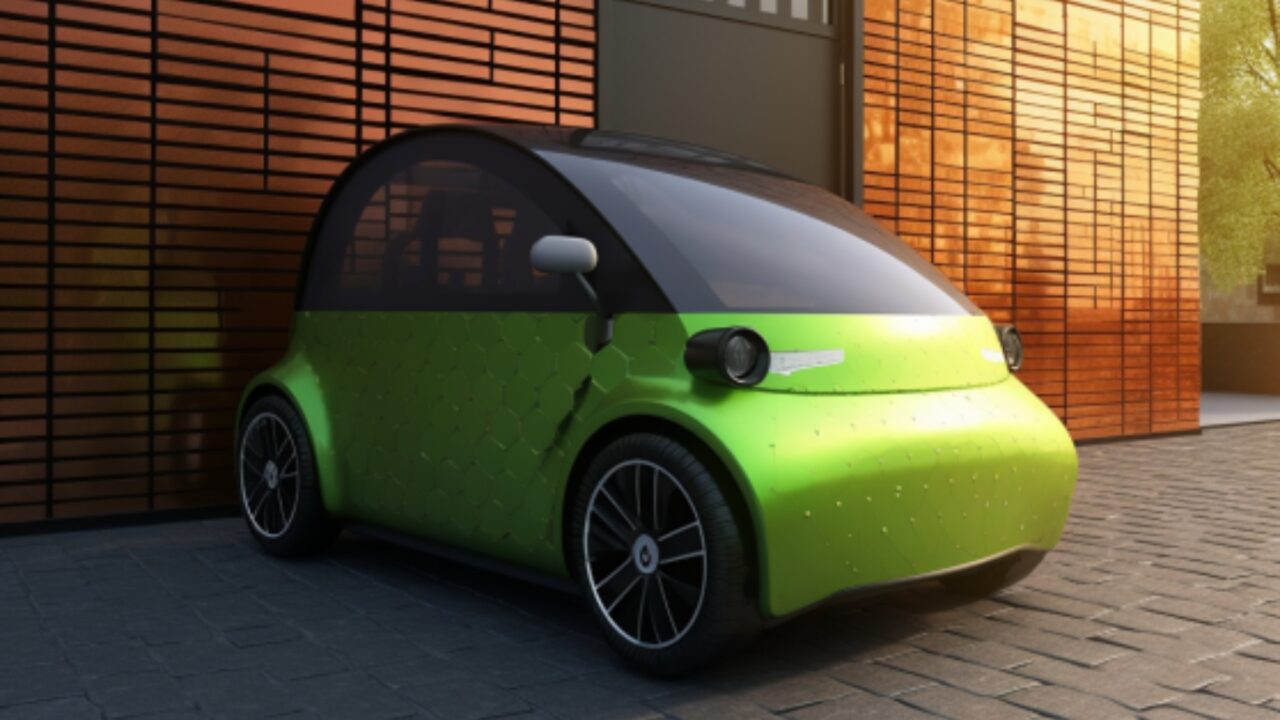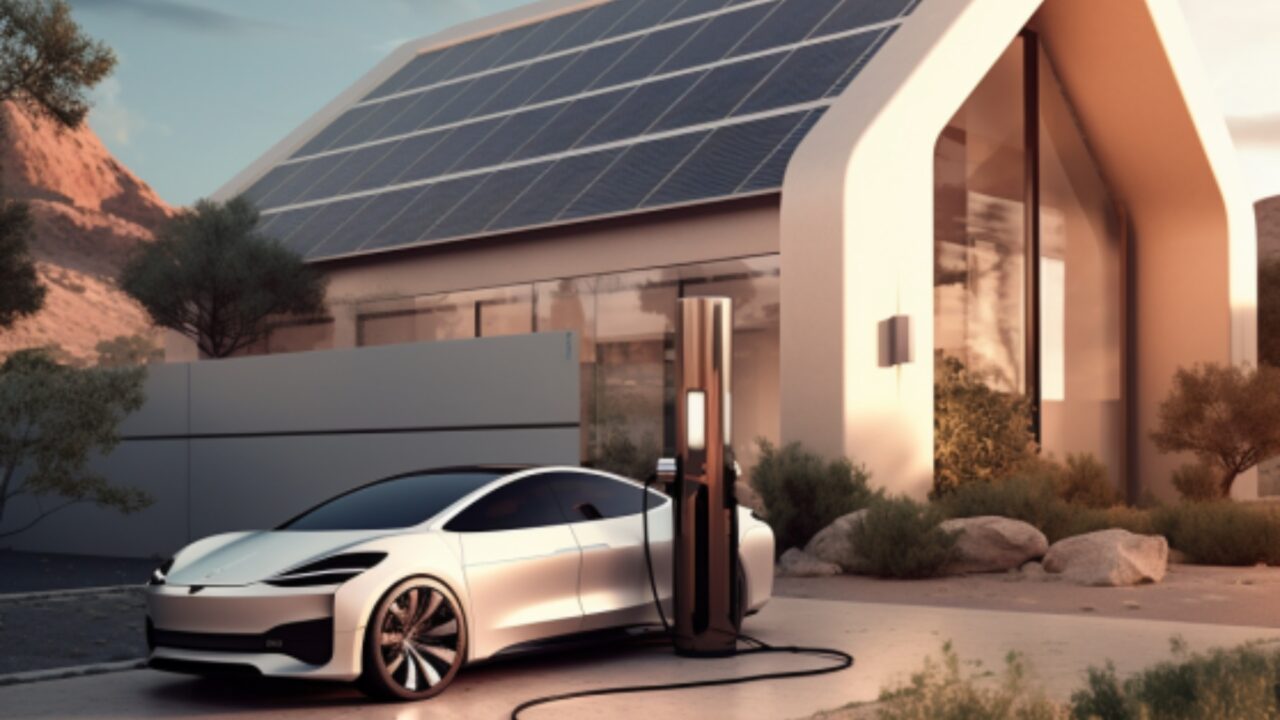Confused about electric vehicle charging terms? Our glossary covers the key terms you need to know to understand EV charging, including AC and DC charging, single-phase and three-phase charging, smart charging, wall box, range, ampere and ampere-hour, kilowatts and volts.
With the increasing popularity of electric vehicles, understanding the different charging options and terminology can be overwhelming. Our glossary simplifies the jargon and provides easy-to-understand definitions of the most important electric vehicle charging terms. Don’t let confusing charging terms hold you back from enjoying the benefits of electric vehicle ownership.
Glossary:
Alternating Current (AC)
AC is a type of electric current that flows in cycles and changes direction regularly. This is the type of current used in homes for powering electrical devices and appliances.
In electric car charging, AC is used for conventional charging (from 2.4 kW to 7.5 kW), semi-fast charging, and fast charging through three-phase at 43 kW.
AC charging
Refers to the process of charging an electric vehicle’s battery using an alternating current (AC) power source.
Ampere (A) and Ampere-Hour (Ah)
An ampere is a unit of measurement for the intensity of the electric current, while the ampere-hour represents the amount of electricity that can flow through the battery terminals in one hour.
AVAS (Acoustic Vehicle Alerting System) or PWS (Pedestrian Warning System)
These are warning systems that electric cars in the UK must have by law, to alert pedestrians of their presence using sound.
Battery Electric Vehicle (BEV)
A type of electric vehicle that is powered exclusively by an electric motor and a rechargeable battery, without any backup internal combustion engine. BEV refers to 100% electric cars that are powered exclusively by the energy of their batteries, which are usually lithium-ion batteries. A small portion of the battery can be charged through the energy recovery system (regenerative braking), but the car must be connected to the electric grid, either at home or at specific charging stations.

BMS (Battery Management System)
The BMS is an electrical system that manages the charging and discharging of the electric vehicle’s battery. It collects data on the battery’s status, including power, voltage, amperage, and cell temperature, and informs drivers about the overall condition of the battery.
CCS
A Combined Charging System (CCS) is a charging standard for electric vehicles that combines AC and DC charging. It is widely used in Europe and North America and is compatible with most electric cars.
With CCS, electric car owners can choose between standard, semi-fast, fast, super-fast and ultra-fast charging speeds, depending on the capabilities of their car and the charging station. Charging times can range from a few hours for normal charging to just 10-15 minutes for ultra-fast charging.
CHAdeMO
CHAdeMO is a charging standard for electric vehicles that use direct current (DC) to charge the battery. It is primarily used by Japanese car manufacturers, such as Nissan and Mitsubishi.
With CHAdeMO, electric car owners can choose between normal, semi-fast, fast, super-fast and ultra-fast charging speeds. Depending on the charging station and the car’s capabilities, charging times can range from 30 minutes to just 10 minutes for a full charge.
Charging Cycle
A charging cycle refers to the complete process of fully recharging and discharging a battery. For example, if we recharge our electric car to 60% on one day, we will not complete a charging cycle until we recharge the remaining 40% to reach 100% on another day.
Charging point
A location where an electric vehicle can be charged, either at home, work or in public.
CPO (Charge Point Operator)
A CPO is a company or entity responsible for operating and managing electric vehicle charging stations, which can be private companies, public entities, or specialised companies.
DC charging
Refers to the process of charging an electric vehicle’s battery using a direct current (DC) power source.
Direct Current (DC)
In this case, the electrons always flow in one direction, which is constantly transmitted.
For electric car charging, DC allows semi-fast charging at 22 kW, fast charging at 50 kW, super-fast charging at 100 kW and 150 kW, and ultra-fast charging at powers between 175 kW and 350 kW. These high power levels allow the vehicle to be fully charged in as little as 5 to 10 minutes.
Electric Motor
An electric motor is a type of motor that delivers instant torque, generates no pollutant emissions during use, and does not require a clutch or gear change, making them automatic.

Electric vehicle (EV)
A vehicle that is powered by one or more electric motors, and obtains electricity from either an onboard battery or an external charging source.
Energy density
Refers to the amount of energy stored per unit volume or mass in an electric vehicle battery.
eMSP (eMobility Service Provider)
An eMSP is a company that offers an app or service for electric vehicle drivers, allowing them to locate and use charging stations, manage payments, and more. For example, Place to Plug is an eMSP that manages charging stations operated by the City Council.
EMS (Energy Management System)
EMS is a system used in Smart Grids, which manages and optimises energy usage, including renewable energy resources, energy-efficient technologies, and smart meters.
EPA and JC08 ranges
The EPA range is the average range of electric cars, based on the testing protocol of the US Environmental Protection Agency. The JC08 range is the average range according to the Japanese testing protocol.
E Revs (Extended Range Electric Vehicle)
An E Revs car, short for Extended Range Electric Vehicle, is a type of hybrid electric vehicle (HEV) that combines the benefits of an electric motor and an internal combustion engine (ICE). Unlike conventional hybrid vehicles, E Rev’s vehicles have a larger battery pack that provides an extended electric-only range.
The E Revs operate primarily using electric power from the battery, allowing for zero-emission driving. When the battery charge depletes, the internal combustion engine kicks in to generate electricity to charge the battery, providing an extended range for longer journeys.
Fast charger
A charging point that can quickly charge an electric vehicle, typically in less than an hour.
FCEV (Fuel Cell Electric Vehicle)
FCEV refers to fuel cell electric cars that use hydrogen as fuel to produce the electricity needed to move the car. If green hydrogen is used, FCEVs are zero-emission vehicles, as they only emit water vapour.
Hybrid Electric Vehicle (HEV)
A type of electric vehicle that combines an electric motor and a conventional internal combustion engine. HEV refers to conventional hybrid vehicles that do not require recharging. In these cars, the main engine is an internal combustion engine (mostly petrol) and has a battery and electric motor that serve as a backup at certain times. They can only be driven in electric mode for short distances and at low speeds, and the battery is recharged by the braking recovery system and the internal combustion engine.
Kilowatt (kW)
Kilowatt is the unit of measurement for electrical power and is used to indicate both the power of the car (e.g. 100 kW) and the charging power (e.g. 7.5 kW, 50 kW). It is also used to indicate the contracted power of a home, typically between 3 kW and 10 kW.
Kilowatt Hour (kWh)
Kilowatt-hour indicates the amount of electrical energy that can be provided, consumed, or produced per hour. It is used to express both battery capacity and average vehicle consumption.
For battery capacity, the larger the battery, the more range and power it can support. For average vehicle consumption, kWh represents the standardised measure of an electric car’s energy consumption. The average electric car typically consumes 3 mi/kWh (equivalent to 15 kWh/100 km). A unit of energy commonly used to measure the capacity of an electric vehicle battery.

Level 1 charging
Refers to the slowest type of charging, typically using a standard 120-volt outlet.
Level 2 charging
A faster type of charging that requires a 240-volt outlet and can fully charge an electric vehicle battery in a few hours.
Lifecycle
The lifespan of a battery is the total number of charging cycles it can withstand while maintaining 100% of its capacity throughout its useful life. Current lithium-ion batteries have a lifespan of about 8 to 10 years, which is equivalent to approximately 3,000 complete charging cycles. After this period, the battery may undergo a degradation process and its capacity may decrease from 100% to 80% or 70%, but it can still be reused for domestic energy storage or energy captured by solar panels.
Lifespan
Lifespan refers to the duration of time that a battery can be used while maintaining a certain level of capacity before it begins to degrade.
Lithium-ion battery
A type of rechargeable battery commonly used in electric vehicles due to its high energy density.
Memory Effect
Memory effect refers to the reduction of a battery’s capacity with incomplete charging, which occurs when a battery is recharged without being fully discharged. However, current lithium-ion batteries used in electric cars have minimal memory effect, so drivers do not have to worry about the impact on the battery lifespan when plugging in their vehicles as many times as needed.
Mennekes
Mennekes is a charging standard for electric vehicles that uses alternating current (AC) to charge the battery. It is commonly used in Europe and is compatible with most electric cars from European manufacturers.
Mennekes charging also offers different speeds, from normal to semi-fast, fast, and even ultra-fast charging with the latest technology. Depending on the charging station and the car’s capabilities, charging times can range from a few hours to just 10-15 minutes for a quick top-up.
MHEV (Mild Hybrid Electric Vehicle)
MHEV is a type of car known as a “semi-hybrid” that has an internal combustion engine as the main engine but is equipped with a 48-volt system that provides a little extra power and torque in certain circumstances.

NEDC (New European Driving Cycle) range
NEDC was a European testing protocol used to evaluate the range and fuel consumption of vehicles until September 2018. Although it’s no longer in use, some cars may still have their range certified under this protocol.
On-board charger
A device that converts AC power from a charging point into DC power that can be stored in an electric vehicle’s battery.
Plug-in Hybrid Electric Vehicle (PHEV)
A type of hybrid electric vehicle that can be recharged by plugging it into an external power source. PHEV refers to plug-in hybrids, which are powered by both a combustion engine and an electric motor and battery. They can be driven in 100% electric mode (with a reduced range of around 32 miles), hybrid mode, or solely with the combustion engine. PHEVs must be charged by plugging the car into the electric grid.
Range
The range of an electric car refers to the number of kilometres or miles it can travel on a full battery charge.
Range anxiety
Refers to the fear of running out of battery power while driving an electric vehicle.
Regenerative braking
A system that captures energy lost during braking and stores it in the electric vehicle’s battery.
Single-Phase Charging
Single-phase charging is the most common option for low-power devices such as washing machines, televisions, and smartphones. The power output can vary depending on the needs and size of the home, with the most common options being between 3.45 kW and 9.2 kW.
In the electric car charging space, single-phase charging is typically used for AC charging and can provide up to 7.5 kW of power.

Smart Charging
Smart Charging is a system that enables electric vehicles, charging stations, and operators to share data connections.
The cloud-based Smart Charging system allows for efficient charging point management and charging optimization. It enables remote charging management and optimization of energy consumption for any charging station based on multiple factors such as available power, the number of vehicles being charged at the same time, and charging priorities.
Smart Grids
Smart Grids are advanced electrical grids that use various energy-efficient measures and renewable energy resources. V2G (Vehicle to Grid) is a popular technology in Smart Grids that enables bi-directional charging between an electric car and the grid, helping to balance energy supply and demand and improving grid stability.
State of charge (SOC)
A measure of the amount of charge remaining in an electric vehicle’s battery expressed as a percentage. SOC is an indicator of the available level of charge of an electric car’s battery at a particular time, expressed as a percentage. DOD (Depth of Discharge) is the opposite concept and indicates the battery’s depth of discharge, expressed as a percentage.
Supercharger
A high-powered charging point that can rapidly charge an electric vehicle’s battery in under an hour.
Three-Phase Charging
Three-phase charging is a faster charging option that can triple the current transported compared to single-phase charging. It can be produced in both AC and DC and provides more power and efficiency from the same current.
Torque
Torque is a physical magnitude that measures the force required to be applied to the motor shaft, measured in Newton/metre (Nm). Electric cars deliver 100% of their torque instantly, resulting in powerful acceleration (reaching 0 to 62 mi/h in less than 8 seconds in most EVs).
Volt (V)
Volt is the unit of measurement for electrical potential, electromotive force, and electrical voltage. The standard household power supply in Europe is usually 230 V.
Electric cars have two electrical circuits – a low voltage circuit between 12 V and 24 V (for windows, lighting, radio, etc.) and a high voltage circuit from 48 V to 500 V, which is responsible for sending power from the batteries to the electric motor
V2H (Vehicle to Home)
a type of V2G technology that enables an electric car to act as a power source for homes, such as during power outages. V2B (Vehicle to Building) is a similar concept but applied to buildings or industries that have electric vehicle fleets.

Wallbox
A Wallbox is a physical, wall-mounted charging station that provides electric current to the electric car to enable its charging.
Watt (W)
A unit of power commonly used to measure the output of an electric motor or charging point.
WLTP (worldwide harmonised light vehicles test procedure)
WLTP is the current European testing protocol used to evaluate the range, emissions, and fuel consumption of vehicles. It provides a more realistic evaluation compared to the previous NEDC protocol.
Zero Emissions Vehicle (ZEV)
A vehicle that emits no pollutants from its tailpipe or fuel system and operates entirely on electricity or hydrogen. Z.E. or ZEV refers to vehicles that do not emit CO2 or pollutants. This term refers to both 100%.
You can find further information on charging options in our blog post here, or get to know the Basics in our Ultimate Guide to Electric Cars.

3 thoughts on “The Best EV Glossary for Electric Car Buyers”
Comments are closed.